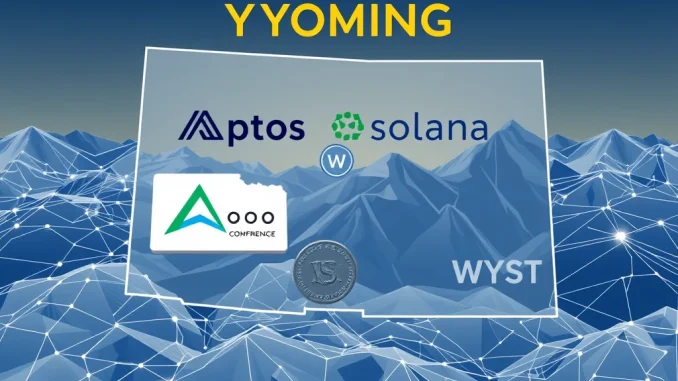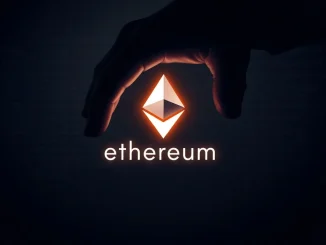
The world of cryptocurrency is constantly evolving, and a significant development is brewing in the state of Wyoming. Known for its forward-thinking stance on digital assets, Wyoming is exploring the creation of a state-backed stablecoin, dubbed WYST. Recent news indicates that two prominent blockchain networks, Aptos and Solana, have emerged as leading candidates to power this innovative initiative.
Why is Wyoming Pursuing a State Stablecoin?
Wyoming has positioned itself as a hub for blockchain and cryptocurrency innovation within the United States. The pursuit of a state-backed stablecoin, WYST, is a logical step in this strategy. By issuing its own stablecoin, pegged likely to the US dollar, Wyoming aims to:
- Provide regulatory clarity and trust for digital asset transactions within the state.
- Facilitate efficient digital payments and potentially attract blockchain businesses.
- Explore new avenues for financial infrastructure in the digital age.
This move signifies a growing interest among governmental bodies in leveraging blockchain technology for practical financial applications.
Aptos and Solana: The Chosen Blockchain Contenders
According to an announcement made by Aptos via the social media platform X, the Wyoming State Stablecoin Commission has adjudicated Aptos and Solana as potential blockchain candidates. This decision puts both networks in a prime position to potentially host the state’s stablecoin.
Let’s look at why these two blockchains might be suitable:
Aptos (APT)
Aptos is a relatively newer layer-1 blockchain built with scalability, safety, and upgradeability in mind. It utilizes the Move programming language, originally developed by Meta (formerly Facebook) for its Diem project. Key features that make Aptos a contender for a project like the Wyoming stablecoin include:
- High transaction throughput (TPS).
- Low transaction costs.
- Focus on security through the Move language.
- Parallel execution capabilities.
Solana (SOL)
Solana is another high-performance layer-1 blockchain known for its speed and low transaction fees. It employs a unique combination of proof-of-history (PoH) and proof-of-stake (PoS) consensus mechanisms. Solana’s appeal for hosting a stablecoin lies in its:
- Exceptional transaction speed and low latency.
- Scalability designed to handle a large volume of transactions.
- Growing ecosystem and developer community.
Comparing the Potential Platforms for WYST
While both Aptos and Solana offer high performance, there are subtle differences that the Wyoming State Stablecoin Commission likely considered:
| Feature | Aptos | Solana |
|---|---|---|
| Consensus | HotStuff (PoS variant) | PoH + PoS |
| Programming Language | Move | Rust, C, C++ |
| Transaction Speed | High | Very High |
| Focus | Safety, Upgradeability | Speed, Scalability |
The choice between Aptos and Solana will likely depend on the specific technical requirements, security considerations, and long-term vision the commission has for the WYST stablecoin. Both platforms present compelling arguments based on their technical merits.
What This Means for Aptos, Solana, and the Stablecoin Landscape
Being considered for a state-backed stablecoin is a significant validation for both the Aptos and Solana networks. It highlights their technical capabilities and potential for real-world applications beyond decentralized finance (DeFi) and NFTs.
For Wyoming, this initiative could set a precedent for other states or even national governments exploring similar digital currency projects. The successful launch of a state-backed stablecoin on either Aptos or Solana could pave the way for broader adoption of these blockchains in institutional and governmental contexts.
The stablecoin market is currently dominated by centralized issuers like Tether and Circle. A state-backed stablecoin like WYST, potentially running on a public blockchain like Aptos or Solana, could introduce a new model focused on regulatory compliance and governmental oversight.
Challenges and Considerations
While the prospect is exciting, challenges remain. Implementing a state-backed stablecoin involves navigating complex regulatory frameworks, ensuring robust security, and achieving widespread adoption among citizens and businesses. The technical integration with existing financial systems will also be a crucial factor.
Conclusion: A Pivotal Moment for State-Backed Digital Currency?
Wyoming’s exploration of a state-backed stablecoin on potential platforms like Aptos or Solana marks a pivotal moment. It underscores the increasing recognition of blockchain technology’s potential by governmental bodies. The final decision on which blockchain will host WYST, and the subsequent success of the stablecoin itself, will be closely watched by the crypto industry and policymakers alike. This development is a clear indicator that the intersection of traditional finance, government, and blockchain technology is rapidly expanding, with Aptos and Solana potentially playing key roles.



